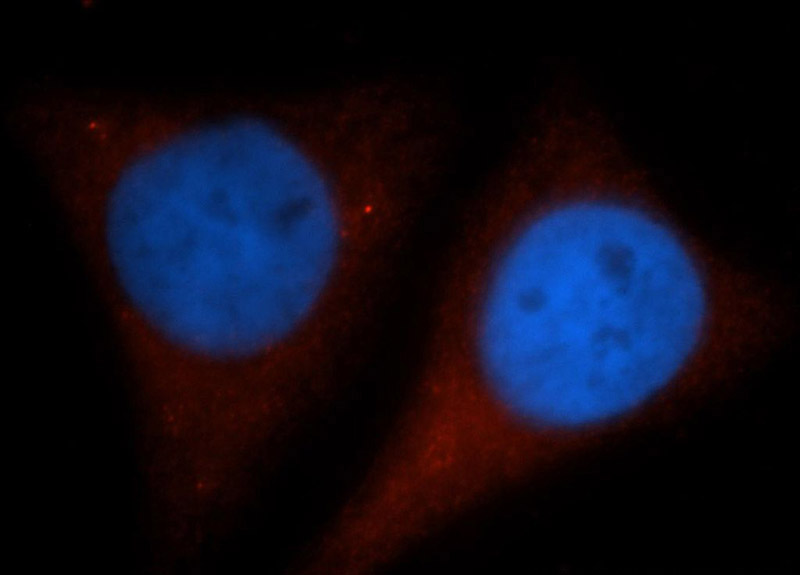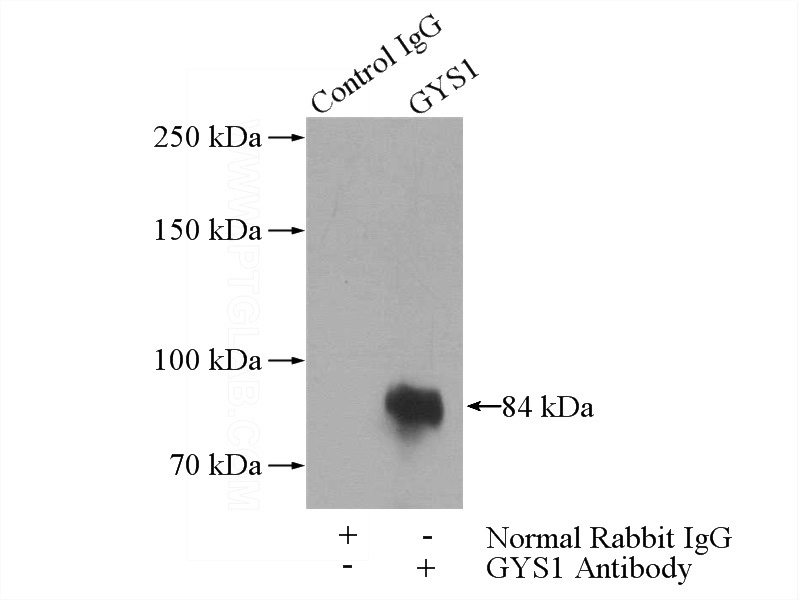-
Product Name
GYS1 antibody
- Documents
-
Description
GYS1 Rabbit Polyclonal antibody. Positive FC detected in HepG2 cells. Positive IHC detected in human prostate cancer tissue, human skeletal muscle tissue. Positive IF detected in HepG2 cells. Positive IP detected in mouse skeletal muscle tissue. Positive WB detected in K-562 cells, HeLa cells. Observed molecular weight by Western-blot: 84 kDa
-
Tested applications
ELISA, WB, IHC, IF, FC, IP
-
Species reactivity
Human,Mouse,Rat; other species not tested.
-
Alternative names
glycogen synthase 1 (muscle) antibody; GSY antibody; GYS antibody; GYS1 antibody
-
Isotype
Rabbit IgG
-
Preparation
This antibody was obtained by immunization of GYS1 recombinant protein (Accession Number: NM_002103). Purification method: Antigen affinity purified.
-
Clonality
Polyclonal
-
Formulation
PBS with 0.1% sodium azide and 50% glycerol pH 7.3.
-
Storage instructions
Store at -20℃. DO NOT ALIQUOT
-
Applications
Recommended Dilution:
WB: 1:200-1:2000
IP: 1:200-1:1000
IHC: 1:20-1:200
IF: 1:20-1:200
-
Validations

K-562 cells were subjected to SDS PAGE followed by western blot with Catalog No:111321(GYS1 antibody) at dilution of 1:500

Immunohistochemical of paraffin-embedded human prostate cancer using Catalog No:111321(GYS1 antibody) at dilution of 1:50 (under 25x lens)

Immunofluorescent analysis of HepG2 cells, using GYS1 antibody Catalog No:111321 at 1:50 dilution and Rhodamine-labeled goat anti-rabbit IgG (red). Blue pseudocolor = DAPI (fluorescent DNA dye).

IP Result of anti-GYS1 (IP:Catalog No:111321, 4ug; Detection:Catalog No:111321 1:300) with mouse skeletal muscle tissue lysate 2200ug.

1X10^6 HepG2 cells were stained with 0.2ug GYS1 antibody (Catalog No:111321, red) and control antibody (blue). Fixed with 90% MeOH blocked with 3% BSA (30 min). Alexa Fluor 488-congugated AffiniPure Goat Anti-Rabbit IgG(H+L) with dilution 1:1000.
-
Background
GYS1(Glycogen [starch] synthase, muscle) is the the rate limiting enzyme of the insulin-induced glycogenesis, transferring glucose units from UDP-Glc to a glycogen primer. It catalyzes the linear addition of glucose residues to the branching structure of glycogen, providing a convenient store of glucose for times of metabolic need. This protein has 2 isoforms produced by alternative splicing.
-
References
- Hall AM, Brunt EM, Chen Z. Dynamic and differential regulation of proteins that coat lipid droplets in fatty liver dystrophic mice. Journal of lipid research. 51(3):554-63. 2010.
- Harris LA, Shew TM, Skinner JR, Wolins NE. A single centrifugation method for isolating fat droplets from cells and tissues. Journal of lipid research. 53(5):1021-5. 2012.
- Zhu H, Sun A, Zou Y, Ge J. Inducible metabolic adaptation promotes mesenchymal stem cell therapy for ischemia: a hypoxia-induced and glycogen-based energy prestorage strategy. Arteriosclerosis, thrombosis, and vascular biology. 34(4):870-6. 2014.
Related Products / Services
Please note: All products are "FOR RESEARCH USE ONLY AND ARE NOT INTENDED FOR DIAGNOSTIC OR THERAPEUTIC USE"
